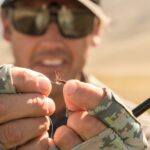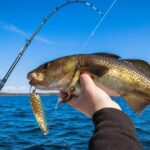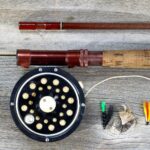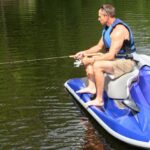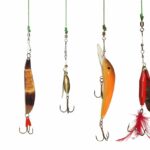As more families seek to enjoy the great outdoors – communing with nature and learning about their immediate environment, it’s no surprise that the pursuit of angling has surged in popularity – especially after recent global health events.
With this increase in the number of people taking up the hobby – family fishing trips are becoming more common, and whilst this is a great thing – with it comes an increased need for reminders of safety rules (and issues) surrounding the activity.
Here we’ve put together some expert advice on fishing safety tips for families. What do those in the know think about what really matters if you’re out and about on the water?
What are three water safety tips you can offer parents?
“Safety on and near the water is paramount for all ages, but especially for kids. I take a three-pronged approach to providing safe fishing experiences for my young anglers, and consider (1) water safety, (2) equipment safety, and (3) fish safety.
Water safety means that everyone in the boat, not just my young guests, wears a USCG-approved life jacket – all the time – no matter how well anyone thinks they can swim. Water safety also means sun protection. The Skin Cancer Foundation reports that having five or more sunburns as a child increases that person’s risk of melanoma by 80%. Hats, sunglasses, and lightweight technical apparel should provide most of your coverage, with a healthy dose of a mineral-based sunscreen on any exposed skin” Dr Jason Halfen from Technological Angler
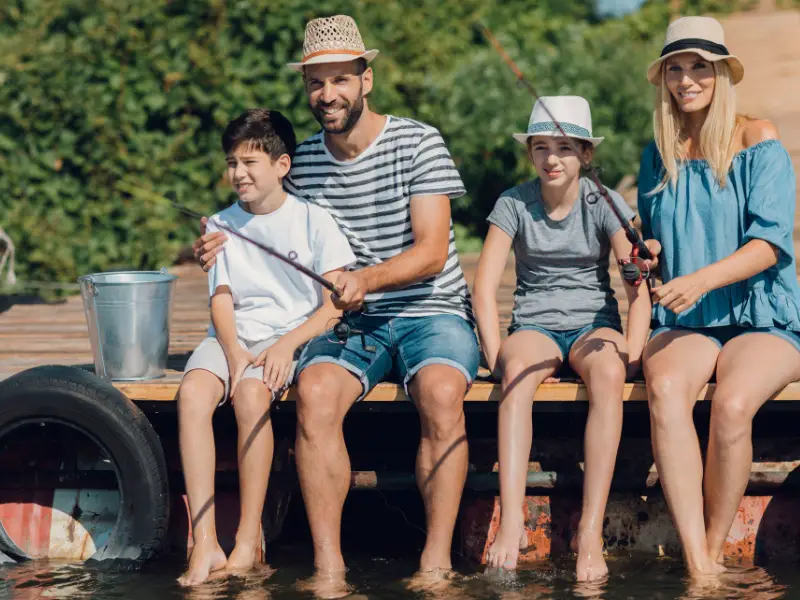
How can you make safety easy for fishing with kids?
“Simplify Your Setup: Opt for uncomplicated tackle, bait, and techniques. Choose fish species that are easy to catch, even if they’re small. Making the initial catches manageable boosts confidence and interest.
Short and Sweet Sessions: Kids have short attention spans. Stick to brief fishing trips, especially at day ticket venues, until they’re more engrossed in the activity.
Angling Appetites: Maintain their enthusiasm with regular snack breaks. Pack anything from homemade sandwiches to freshly cooked bacon baps for a satisfying fishing experience.
Mastering Patience: As an adult, anticipate being hands-on. Untangling lines, baiting hooks, and sharing in their excitement over each catch are part of the deal. While waiting for action, teach them fishing knots, let them explore bait scents, and share intriguing facts about the surrounding nature.
Pack your fishing tackle together: This imparts organisation skills and introduces them to the enjoyable anticipation of preparing for a fishing trip. Demonstrating how to organize terminal tackle, prepare rigs, and load reels with lines” Anna Cooper writing for Angling Direct
What are two of the less obvious dangers when fishing with kids?
Soft Plastics
Kids would play with soft plastic worms, tubes, and especially salamanders all day long if you would let them, but you need to read the package first because certain brands carry significant health warnings and really shouldn’t be handled by children prone to put them in their mouths. Please make sure you know what you’re giving your children so that they don’t suffer any long-term ill effects, and have them wash their hands when they come back from fishing.
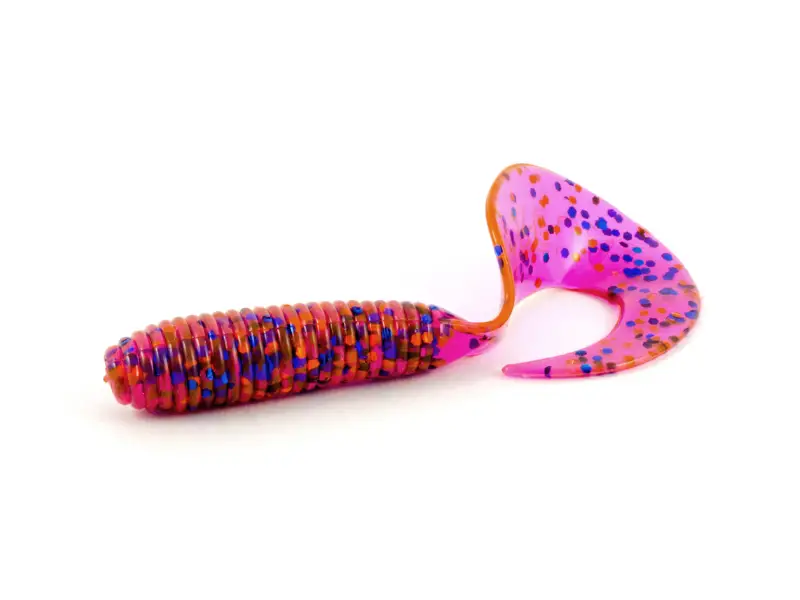
Lead
Please bear in mind that many of the fishing lures out there and a majority of the weights are made of lead. Lead can be harmful to your health, though you’d think it would take a bit more than some fishing trips to bring about problems. If you’re concerned about this, some manufacturers offer alternative tungsten options. These tend to be more expensive, but you’re buying peace of mind. In some states, like Massachusetts, they are required by law and one can only expect other states to eventually follow suit.” John Paxton at Fishing Father

How important is learning to fish alongside your family for survival?
“Learning to fish with your family for survival is not just a useful skill, but a fun and important one too. Imagine a situation where the main fisher can’t fish. Having others who know the ropes ensures that your bellies stay full and that there is a smile on everyone’s face. Fish are like nature’s power bars, packing all the good stuff your body needs and craves into one source. Catching a fish is a good reason for a victory dance in the wild, as it boosts everyone’s spirits. In a survival scenario, it’s a family treasure to know how to fish. It’s not just about food; it’s about working together and feeling closer. When the going gets tough, this skill becomes your secret weapon, helping the whole family adapt and conquer the wild with a big, proud grin on your face. So, cast those lines and reel in the family fun. Learning to fish together is your ticket to survival and adventure!” Jason Marsteiner Owner/founder of Colorado Mountain Man Survival, LLC and founder/CEO of the non-profit organization, The Survival University
How do you ensure that conservation is kept in mind when planning a fishing trip?
“Fishing is a recreational activity that may be enjoyed by outdoor enthusiasts of all ages, however, there are important conservation factors to consider to ensure the protection of our natural resources.
One of the most important conservation aspects to consider is overfishing. Overfishing can occur when too many fish from a particular species are removed, therefore, affecting the species’ future population growth. In many cases, recreational areas will have information posted on what types of fish to avoid due to the risk of overfishing and whether they have size requirements for fish that are kept. You can also check with your state’s parks and wildlife divisions for rules and regulations.
Another conservation consideration is ensuring that you do not bring invasive species to water sources. Plants such as Eurasian watermilfoil and Hydrilla and mollusks including Zebra Mussels are often carried on watercraft and can severely damage water habitats. It’s important to inspect your boat before entering any waterbody and clean your boat regularly.
Following sustainable fishing practices is essential to the protection of our fragile ecosystems and the many species who call them home.” Laura Herrin. Laura has worked in the conservation field for more than 20 years and is currently the President and CEO for American Conservation Experience, which recruits, trains and mobilizes 1,000 young adult volunteers annually to help protect public lands.
What are some of the biggest concerns when it comes to safety in fishing?
“Drowning may be the biggest concern and fear when it comes to fishing. It’s certainly the leading fatal fishing accident and all fishermen should know how to respond and prepare in the event of possible drowning.
The first step is “Prevention over intervention”. Using appropriate safety measures is key to not letting drownings occur. Consider these simple measures:
- Learn to swim
- Invest in and wear life vests and non-slip shoes
- Have life rafts or buoy’s
- Have an action plan in place should an emergency occur
- Don’t fish alone & let others know who you’re with, and where you’ll be
Nonetheless, accidents do happen. In these cases, you can best be prepared by:
- Being certified in CPR/AED & First-Aid
- Having brought a cell or satellite phone
- Have an AED with you if and when possible
Should a drowning occur, rescue the victim only if you can do so safely and get them to dry, solid ground and perform CPR. If an AED is available, dry the chest and use the AED as soon as possible.
In cases of drowning, the rescuer should begin with two breaths and then perform compressions to breaths in a ratio of 30:2. If the victim vomits, turn the head and clear the vomit. Minimize interruptions in compressions and continue CPR (breaths are optional) until advanced care arrives.” Josh Sauberman Owner, CPR Education
- Do You Need An Indicator For Nymph Fishing? - November 16, 2023
- Fishing Safety Tips For Families - September 25, 2023
- What Is The Best Time To Night Fish At A Lake? - September 18, 2023

